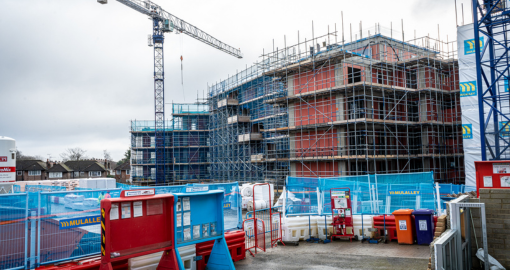Independent Scaffolding
When it comes to meeting your construction needs, choosing the right scaffolding is of paramount importance. While there are several options that can be deployed, Independent scaffolding often stands out for layout, in-service and stability reasons. With its flexibility and safety, Independent scaffolding is increasingly popular across all construction, demolition and infrastructure projects.
Flexibility is a key advantage of Independent scaffolding. It can often be easily customised to fit specific requirements of a project, allowing for quick adaption and sequential changes as needed. The adaptability ensures that the scaffold perfectly supports construction process.
Different types of scaffolding
There are two principal types of either Tube and Fitting or System scaffolding traditionally used, free standing such as Birdcage scaffolds or Towers, and tied scaffolds, such as Independent or dependent scaffolds tied to an adjacent structure. However, there are many alternate types which are implemented, some as detailed below:
- Free standing or tied Mobile and Access or Support Tower scaffolding: Towers normally consist of four primary standards, laced and braced in all planes to serve a multitude of purposes. Towers are ideal for confined space works and may be constructed so that they are lifted by crane or other plant.
- Putlog scaffolding: this is traditionally known as a bricklayer’s scaffold, consisting of an outer row of vertical members, joined together by ledgers fixed with right-angle couplers. This adds support to the transverse transom, which are built into the brickwork bed joints as work proceeds. You would typically find this for new work in brickwork structures, however older buildings were traditionally built using this system and pockets remain for remedial use.
- Independent tied scaffolding: Independent tied scaffolding consists of two rows of standards with each row joined together with ledgers and corresponding transoms. This scaffolding is erected independent from the building, but is ties to the building for rigidity at required
- Birdcage scaffolding: This is generally an expansive scaffold, often found where interior works are taking place, such as large halls. This scaffold consists of parallel rows of standards connected by ledgers and transoms, with more than two rows of standards in each direction.
- Slung scaffolding: This scaffolding is suspended from the main structure or support dependent scaffolds using beams, tube and fittings, or sometimes via wire ropes and steel chains. Similar to Birdcage scaffolding, however, this particular structure leaves space beneath the platform.
- Bridged Scaffolding: formed or prefabricated beams interlaced with support tube work and bracing, to provide access, protection, or support across spans, always requiring foundational support from buildings or dependent structures.
- Staircase scaffolding: usually built from tube and fitting components or system scaffolding, these provide general access for site, along with emergency, pedestrian and events access in various locations, sometimes integral to other scaffolds.
What is the difference between dependent and Independent scaffolding?
In short, the main difference between dependent and Independent scaffolding is that Independent scaffolds do not rely on the structures or buildings for support, but instead use two lines of standards to support the working deck.
There are advantages of using both Independent and dependent scaffolding.
Dependent scaffolding advantages:
Dependent scaffolding relies on a wall or structure for support, therefore, is more rigid and can withstand loading or harsh weather conditions. This type of scaffolding also, generally, does not require as many parts as Independent scaffolding.
Independent scaffolding advantages:
Independent scaffolding does not rely on structures or the walls of a building for support, however, is still tied for stability reasons. This type of scaffolding uses at least two lines of standards to support the working deck.
Where to use Independent scaffolding
Independent scaffolding can be used in a variety of projects, including commercial, residential, demolition, infrastructure, and rail. A good example of where Independent scaffolding excels in its advantages is Skinners’ Hall, where minimal reliance on the building as a supporting structure was needed due to it being Grade I listed.
What type of scaffolding is right for you?
With the vast range of options available, it’s important to use the correct scaffolding for your project. Be sure to converse in detail with your scaffolding contractor about the project requirements. This enables them to gain a full understanding of the project dynamics, along with any health and safety needs to ensure that the correct type is used for your project. This will also be discussed during the pre-planning stage, in which the scaffolding contractor supplies designs and reasonings for their selections.

